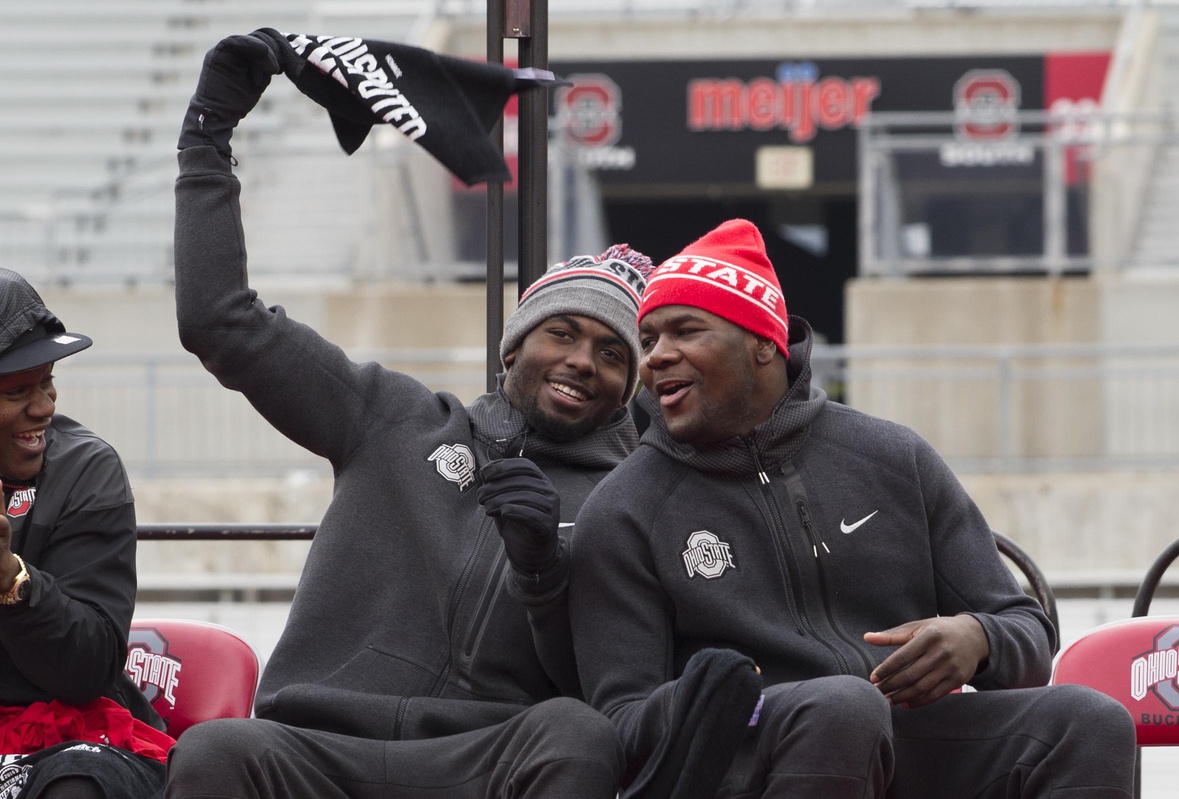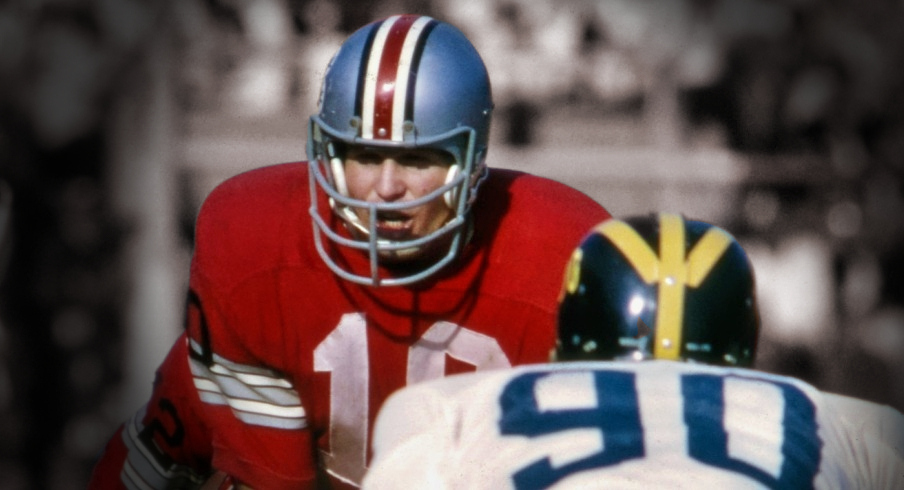George Lynn is credited with five interceptions in 1942.
When you learn George was Ohio State's quarterback and team captain (the only one Paul Brown had that year; the rest were playing for Uncle Sam) five picks seems like a lot. Especially in a T-formation offense that took the air out of the ball.
Except that Lynn didn't throw any of those picks. He caught them, while pulling double-duty on the defense and also serving as a first-time starting quarterback. It was malicious efficiency under constraints Ohio State and all programs were facing during the first half of that decade.
The Buckeyes won their first national championship in Lynn’s first and only year at quarterback. Twelve seasons later, Dave Leggett led Ohio State to a second title in his second year as the starter.
Leggett is the answer to the trivia question. He is the outlier. Somehow, Leggett is the only veteran quarterback to win a national championship in Ohio State program history.
Every other seasoned QB has come up short. Every other ring has a new starting QB wearing it.
Veteran Buckeye quarterbacks have been either been victimized by bad timing, bad luck or more recently, bad defenses.
Frank Kremblas in 1957, John Mummey in 1961, Rex Kern (pictured above in the because I couldn't go for three game) in 1968, Craig Krenzel in 2002 and J.T. Barrett with Cardale Jones in 2014 shared a total of zero seasons as full-time starting varsity quarterbacks heading into the years they led the Buckeyes to national championships.
It's an odd quirk for a blue blood program for the position Jim Tressel called the most important job in the state while acknowledging governor was a distant second. But it is easy to whatabout some of the details, like Ohio State’s history with that position.
Also, a World War-constrained season or a team whose university declined a Rose Bowl invite in 1961 to focus on academics being awarded a title. The freshman teams a few of those quarterbacks gained seasoning participating in prior to joining the varsity, along with the diminished importance of quarterbacks in the bygone Handoff Era.
Sure, poke holes in the anomaly. But then try to explain away the eight serious contenders who nearly joined the list of first-time starting quarterbacks over the past 30 years.
Heisman finalist and new starter C.J. Stroud wasn't the reason the Buckeyes couldn’t win it all in 2021, and Heisman finalist and new starter Justin Fields was also on his way to the podium in 2019 before every mystical element that could have possibly Clemson's way went Clemson's way.

Heisman finalist and new starter Dwayne Haskins averaged two broken school records per start in 2018 and was plagued by the same albatross Stroud dealt with in both of his seasons as starter. Even Todd Boeckman was absolutely steady and arguably just one cursed play from finishing the job in 2007.
Eighteen seasons prior to Barrett and Cardale, Stanley Jackson and Joe Germaine were Ohio State’s new starting QB platoon in replacing Bobby Hoying, who as a new starter in 1993 platooned with fellow newbie Bret Powers and got all the way to Ann Arbor before their first loss.
All these teams finished within striking distance of a championship with brand new starters.
If the contention is well, Ohio State is always contending then why has only one veteran quarterback in program history won a big ring? This is a statistical anomaly mathematicians and football scientists should be examining.
Three different Woody Hayes offenses requiring different quarterback skill sets (single wing, T-formation, I-formation) along with Tresselball and Urban's power spread all reached the final podium. The offenses have changed and evolved.
Veteran quarterbacks have been either been victimized by bad timing, bad luck or more recently, bad defenses. But there is an element of being a new starting quarterback at Ohio State that may contribute to the success they’ve had in clearing the sport’s highest bar.
When Barrett was thrust into the role following Braxton Miller’s injury during the 2014 preseason, he was positioned as a distributor. He distributed his way to numerous conference accolades and Heisman votes before Jones stepped in and over-delivered in relief. Both of them played within themselves and let the game come to them.
Fields immediately embraced his role within the system he had joined, just as Haskins had prior to his arrival. Perhaps part of the reason new starters have found success is that they’ve accepted the just do your job mantra to keep the moment from getting too big.
Lynn could have been overwhelmed by staying on the field as much as her did in 1942, but he was also likely managing the gravity of many of his teammates playing a different game across the Atlantic and Pacific.
Perhaps the guys around the new starters raised their level of play to accommodate for a learning curve. Either way, Kyle McCord and Devin Brown enter 2023 with one start between them and none since 2021. Lincoln Keinholz hasn’t even practiced yet.
So two things can be true: Ohio State’s offense will have to acclimate to a new starter, and the Buckeyes are in their prime historical window for winning another national title.



